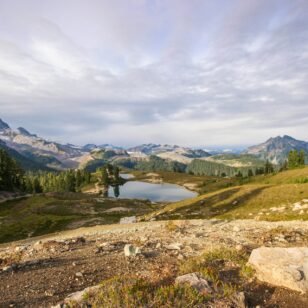 It is important to remember when you go snowshoeing or hiking near Vancouver, even if you start at a popular ski resort or on a busy trail, you are heading into the wilderness. Here are some tips for staying safe outdoors in Vancouver this winter.
It is important to remember when you go snowshoeing or hiking near Vancouver, even if you start at a popular ski resort or on a busy trail, you are heading into the wilderness. Here are some tips for staying safe outdoors in Vancouver this winter.
Until February 5, 2021, in line with the public health order issued on November 20, non-essential travel into, within, and out of BC is not recommended. BC residents let’s do our part by continuing to stay local and support local, with your immediate household or bubble, in accordance with the latest guidelines.
Pack the Essentials: North Shore Rescue recommends bringing a backpack with essential safety and first aid gear on every hike. This includes a flashlight or head torch, signalling device (whistle or bear banger, pencil flare), fire starter, warm clothing, pocketknife, shelter device, food and water, basic first aid kit, navigation tool, mobile phone.
Check the Forecast: All-weather can be unpredictable, but Vancouver’s winter weather can be particularly hazardous to the unprepared. Be sure to check the weather forecast so you can pack and wear the correct clothing.
Vancouver isn’t colloquially known as rain-city for nothing. Waterproofs and good hiking boots are a must.
When checking the forecast, be sure to also note the time of sunset. It’s important to aim to be back at the car by sunset to avoid the incoming cold of nightfall or getting lost on trails in the dark. Knowing when you need to be back will help you plan your start time.
Avalanches are also common in our local mountains. Check the avalanche forecast before you go. If the risks are considerable, it is a good idea to reschedule your hike. To learn more about avalanche safety, take the avalanche safety course or a free online tutorial.
Leave a Trip Plan: It’s always a good idea to let someone know where you are going and when you will be back. This way, if you do not check-in, they know to alert someone that you may need help.
If You’re New to Snowshoeing: Stick to easy beginner-friendly trails. More challenging trails can head into avalanche territory.
Low-Elevation Trails: While low elevation trails close to the city are usually snow-free, they can become icy or snowy. A good indicator is if the city is chilly, icy, and snowy, then the trails are likely to be too.
Traction Devices: Bring traction devices like micro-spikes, trekking poles, and/or snowshoes to make it easy to walk on the trails and avoid slipping.
Waterfalls: Some waterfalls freeze during winter. While they look spectacular, use caution near them. As tempting as it may be, avoid getting too close or climbing on the waterfall as chunks of ice can fall from above or become unstable at any time.
Frozen Water: You might also see plenty of frozen lakes, streams, and creeks. It is best to stay off the ice, as water can be deeper and ice less sturdy than they appear.
Tips for Snowshoeing and Winter Hiking with Dogs
-
- Bring a leash.
- Pack out poop to keep the environment clean and respect other trail users.
- Start slow and go at your dog’s pace. Walking in deep snow can be very tiring for dogs. Older and less fit dogs may not find snowshoeing fun.
- Pack snacks and water for both you and your pup.
- Check the forecast and pack extra clothing for both you and your dog. Be sure to bring lots of waterproof gear and warm layers. Consider bringing booties or paw wax to protect your dog’s paws from ice and snow.
















